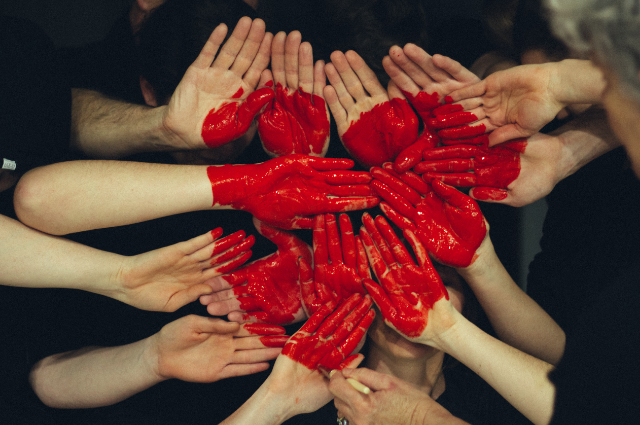
"Empowering women through periods is not just about managing a natural cycle; it's about nurturing a culture of understanding, compassion, and equality." - Malala Yousafzai
In a world where information surges like a digital tide, there are still tides that remain unsurfaced, veiled in shadows cast by silence and ignorance. One such tide is the ebb and flow of menstruation, a natural rhythm that has woven itself intricately into the fabric of human existence. While the internet hums with readily available information, let us embark on a journey to uncover the lesser-known narratives, the uncharted territories of menstruation that rarely find their way into the virtual realm.
Menstruation, that natural rhythm that connects generations, is oftentimes shrouded in a cloak of silence. Across cultures, the hushed whispers and hidden glances can speak volumes about the intricacies of societal norms. Unveiling these cultural codes, we delve into the rituals that serve as both guardians and gateways to womanhood.
Rites of Passage and Reverence:
Within certain cultures, the menstrual journey isn't merely a biological phenomenon; it's a rite of passage marked with rituals that transcend time. The symphony of drums and the dance of firelight become the backdrop for initiation ceremonies where girls step into womanhood, embraced by the wisdom of generations. Such rituals, while seemingly exotic to outsiders, underscore the deep connection between humans and the cycles of nature.
Taboos, like thorns on a rose, cast shadows on the path of menstrual exploration. From being deemed impure to restricted from religious spaces, the taboos that encircle menstruation range from subtle to severe. It's within these taboos that the resilience of women's spirits shines brightest, as they navigate a world where their very existence is considered a potential disruption.
The Struggle for Dignity:
Yet, while some cultures revere menstruation, others struggle to extend dignity to women during these natural phases. The lack of access to sanitation facilities, health education, and menstrual hygiene products underscores the harsh reality faced by countless women worldwide. This chasm between cultural beliefs and practical realities necessitates a dialogue that bridges tradition and modernity.
TRACING THE ARC OF MENSTRUATION THROUGH HISTORY:

Step back to ancient civilizations, where the rhythm of life was closely interwoven with the rhythm of nature. In the scrolls of old, we encounter captivating myths that sought to explain the enigma of menstruation. From tales of lunar goddesses whose blood was believed to rejuvenate the Earth to narratives of sacred temples adorned with carvings that whispered of women's innate connection to the cosmos, these myths painted menstruation as a mystical bridge between the terrestrial and the celestial.
Healers and Humours:
Venturing further, we find ourselves in the chambers of ancient healers and physicians, where wisdom and conjecture coalesced. Menstruation, once shrouded in myth, came under the scrutiny of medical inquiry. In the annals of antiquity, references to humoral theories that assigned balance and imbalance to bodily fluids underscored the significance attributed to menstrual blood. It was not merely a monthly occurrence but a reflection of a woman's overall well-being.
The Evolution of Attitudes:
As the tapestry of civilizations unfurled, so did the perspectives on menstruation. Societal attitudes, deeply embedded in cultural norms, began to cast new hues upon this natural phenomenon. The pendulum swung between reverence and repudiation. In some cultures, menstrual cycles were celebrated as a symbol of fertility and vitality, while in others, they were met with apprehension and exclusion.
Reflections in the Present:
Fast-forward to the present day, where the echoes of history reverberate in contemporary attitudes. The evolution is undeniable, as the whispers of ancient myths have transformed into a symphony of scientific understanding. Yet, societal perceptions still dance on a spectrum, acknowledging progress yet hinting at persisting taboos.
In this intricate dance between past and present, the journey of menstruation stands as a testament to the human inclination to unravel the mysteries of existence. It is a narrative that reveals not only the evolution of knowledge but also the evolution of empathy, as we traverse from mythical reverence to a more comprehensive appreciation of this vital cycle of life.
As we draw our exploration to a close, one cannot help but marvel at the layers of perception that history has bestowed upon menstruation. The myths that once shaped beliefs, the medical practices that framed understanding, and the ever-shifting societal attitudes that paint this canvas of time - all of these contribute to a tableau that is as diverse and complex as the tapestry of humanity itself.
MENSTRUAL HYGIENE IN LOW-INCOME LANDSCAPES:

In the quiet battle for dignity and comfort, women in low-income settings face a labyrinth of challenges in managing their menstrual hygiene. Scarce financial resources, coupled with deeply embedded cultural taboos, conspire to erect a formidable wall around open discussions and proper education. This often leads to a lack of access to sanitary products, safe sanitation facilities, and essential information, catapulting these women into a cycle of vulnerability.
However, even amidst these shadows, the human spirit's tenacity finds its wings. Innovative solutions are weaving a tapestry of change, bringing light to the darkened corners. A myriad of organizations, akin to modern-day alchemists, have rolled up their sleeves and are crafting accessible and sustainable menstrual hygiene products. These pioneers understand that the bridge to empowerment is paved with knowledge and choice.
One such luminary in this realm is the;
- Flourish Foundation, an organization committed to weaving threads of empowerment by creating reusable, eco-friendly menstrual products. These products not only alleviate the financial burden but also tread lightly on the Earth, fostering a harmonious relationship between woman and nature. Through workshops and community engagement, the Flourish Foundation doesn't merely provide products but nurtures a sense of agency, igniting a spark that transcends the realm of hygiene.
- Renaissance Initiative, a collective of young minds harnessing the power of technology. Their innovative app delivers a trove of information on menstrual health and hygiene, shattering misconceptions with every tap. By merging traditional wisdom with contemporary tools, they empower women to become their own advocates, transforming whispered doubts into confident conversations.
The tapestry doesn't end there, for these initiatives are but stars in a constellation.
MENSTRUAL DISORDERS AND HEALTH:

- Polycystic Ovary Syndrome (PCOS): A Stealthy Intruder: Within the folds of femininity, PCOS emerges as a stealthy intruder, wielding irregular cycles, hormonal imbalances, and a concoction of symptoms that defy a singular definition. This enigmatic disorder, akin to a cryptic labyrinth, challenges not only physical well-being but also self-esteem and emotional equilibrium. Insulin resistance, hirsutism, and the haunting possibility of fertility struggles compose the jigsaw of PCOS. Navigating this maze requires a delicate blend of medical expertise and emotional support, as women grapple with its shadowy complexities.
- Endometriosis: When Pain Paints a Peculiar Portrait: Imagine a canvas where pain becomes an artist, painting a peculiar portrait within the confines of a woman's body. This masterpiece, known as endometriosis, transcends mere discomfort, metamorphosing into a relentless adversary. With tissue akin to uterine lining springing up in far-flung corners, each monthly cycle unveils a performance of agony. Misdiagnosed as 'normal' pain for years, women often walk a thorny path before the truth dawns - they bear a disorder that craves recognition. Beyond the realm of pain lies the potential erosion of fertility, shadowing a woman's dreams with uncertainty.
- Premenstrual Dysphoric Disorder (PMDD) - The Tempest Within: As the tides of the menstrual cycle ebb and flow, some women find themselves cast adrift in a tempest of emotions - PMDD, a storm within. Unlike the gentle rain of mood swings, this disorder heralds emotional upheavals that eclipse the sun. A crescendo of anxiety, despair, and irritability engulfs the days leading to menstruation, leaving its mark on relationships, careers, and the very essence of life. Often misconstrued as a mere bout of 'PMS,' PMDD carves its own niche as a formidable force that demands recognition and tailored interventions.
- The Road Less Traveled - Diagnosis Challenges and Beacon of Hope: Embarking on the journey to diagnosis is akin to navigating a labyrinth, each twist and turn revealing fresh enigmas. Misdiagnoses, dismissive attitudes, and the oft-misunderstood nature of these disorders form formidable roadblocks. The medical fraternity must don the mantle of detectives, piecing together fragmented symptoms to unveil the underlying truth.
Yet, amidst the darkness, a beacon of hope beckons. Research marches forward, casting light upon the intricate tapestry of these disorders. From hormonal therapies that tame the PCOS beast to surgical interventions that offer respite from endometriosis, science paints a portrait of promise. Mental health interventions, too, stand as pillars of strength for those ensnared by PMDD's emotional tempest.
It's time to stand by those facing these challenges, ensuring their voices are heard, and their struggles acknowledged. Together, we empower change.
